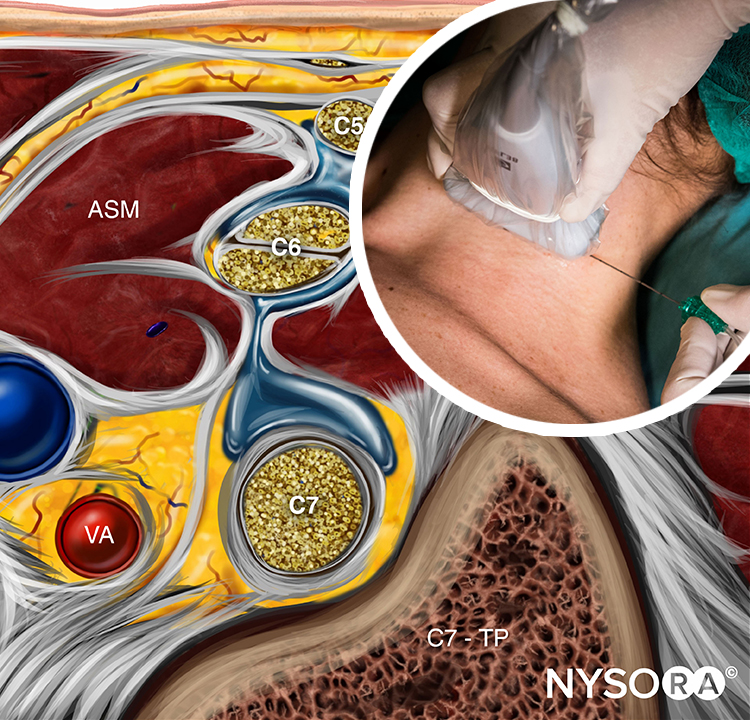Upper Body
Brian Cornelius, DNP, CRNA; Bailey Freeman, DNP, CRNA; and Angela Mordecai, DNP, CRNA
OER Anesthesia Procedure Guide V2 M1 PNB (CLICK HERE FOR FULL GUIDE)
Interscalene Block
Surgical Indications: Distal clavicle, shoulder, proximal humerus
Target Nerves: C5, C6, C7 spinal nerve roots
Complications: Horner’s syndrome, hemidiaphragm, pneumothorax, hoarseness (RLN blockade)
Procedure Steps:
- Place probe on supraclavicular fossa; identify subclavian artery and brachial plexus
- Scan superiorly to find nerve roots in “stoplight” pattern at cricoid level
- Advance needle from posterior to anterior in-plane
- Motor response to stimulation: deltoid, pectoralis, biceps, triceps, forearm, hand
Equipment:
- High-frequency linear ultrasound probe
- Short to medium-length, insulated, short-bevel needle
- Local anesthetic volume: 5–15 mL
Supraclavicular Block
Surgical Indications: Lateral shoulder, upper arm, elbow, forearm, hand
Target Nerves: Upper, middle, and lower trunks of the brachial plexus
Complications: Horner’s syndrome, hemidiaphragm, pneumothorax
Procedure Steps:
- Place probe on supraclavicular fossa; identify subclavian artery, first rib, and pleura
- Identify brachial plexus lateral to artery
- Advance needle posterior to anterior in-plane
- Inject near lower trunks (deep), then withdraw and redirect to inject middle and upper trunks (superficial)
- Motor response to stimulation: biceps, triceps, forearm, hand
Equipment:
- High-frequency linear ultrasound probe
- Short to medium-length, insulated, short-bevel needle
- Local anesthetic volume: 10–20 mL
Axillary Block
Surgical Indications: Elbow, forearm, wrist, hand
Target Nerves: Radial (RN), ulnar (UN), median (MN), musculocutaneous (MC)
Complication: Intravascular injection
Procedure Steps:
- Place probe on axillary crease and identify the axillary artery
- Identify surrounding nerve branches, including musculocutaneous nerve (MC) in lateral muscle
- Advance needle from cephalad to caudad in-plane
- Inject deep to the artery (targeting RN), then superficial (MN, UN)
- Withdraw slightly to inject around MC
- Motor response to stimulation: biceps, forearm, hand, fingers
Equipment:
- High-frequency linear ultrasound probe
- Short to medium-length, insulated, short-bevel needle
- Local anesthetic volume: 20–30 mL
Media Attributions
- UE_Interscalene_Featured-image-750×720-1


